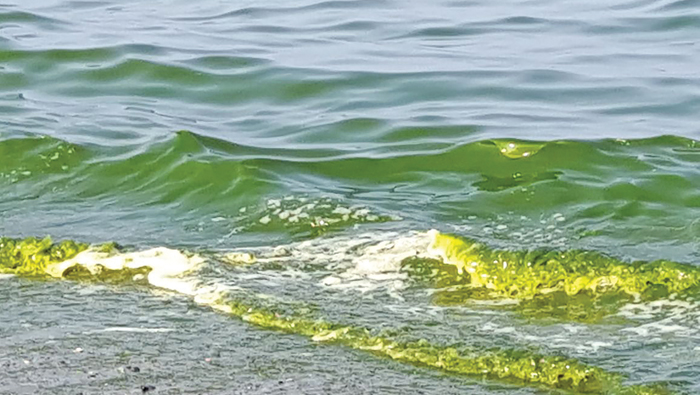
Muscat: The algae blooming off the coast of Oman has been driving up the cost of desalination, along with endangering equipment and making the conversion process more difficult.
Aditya Akella, the quality system and laboratory head of the Sur-based Bahwan Veoila Water LLC, said the ‘pre-treatment’ cost had increased by 30 to 40 per cent because the sea water was ridden with algae.
The Sultanate heavily depends on desalination to convert sea water for drinking and domestic purposes. “Our plant desalinates 131,000 cubic metres of water every day,” noted Akella.
The extra pre-treatment cost is added to an already expensive process, he remarked. The plant uses Reverse Osmosis (RO) technology for desalination.
“There is a 30 to 40 per cent increase in the pre-treatment cost. Chemical coagulation dousing, sludge treatment, and backwash operations costs increase during algal blooms,” Akella pointed out.
The laboratory head said the equipment used for desalination can be damaged by algae, even after pre-treatment. In rare cases, it can even cause the plant to close.
“There are cases where even after extensive pre-treatment, algae passes through to the membranes and leads to its fouling, and causes degradation of the facility. Luckily, we haven’t faced this situation yet,” Akella said.
The Middle East Desalination Research Centre (MEDRC) agreed that algae blooms pose a hindrance to desalination. The organisation’s representatives added that they were working on a solution to overcome Harmful Algal Blooms (HABs), which are especially troublesome.
An official statement by the MEDRC noted, “MEDRC is working on the delivery of an early warning system for Harmful Algal Blooms (HABs), which would offer a practical and efficient scientific response to the threats that they pose.”
The MEDRC stressed that they, as researchers, felt responsible to respond to this danger.
“HABs present a serious threat to desalination plants by clogging filters and fouling membranes, which can disrupt the flow and reduce productivity. In extreme cases, HABs may even force a partial or full shut down of a desalination plant.
“This has increased the pressure on us, as researchers, and also on desalination operators to closely monitor for the onset of HABs and prepare to respond,” MEDRC added.
Akella emphasised that the Sharqiyah desalination plant was coping with the algae because it was drawing water from relatively safer sources. “At present, there is no impact on the plant. About 67 per cent of the source of feed water for the plant is through sub-surface intakes or beach wells, which aren’t impacted by the algal bloom, as much.
“However, we are closely monitoring the sea water quality and taking measures to use direct sea water,” Akella said.
Oceanographer at the Sultan Qaboos University, Khaled Al Hashmi, pointed out that the algae bloom is a seasonal phenomenon. “The algae usually start blooming in August or September, and will last till December or January. People engaged in desalination of sea water will face difficulties due to this.”